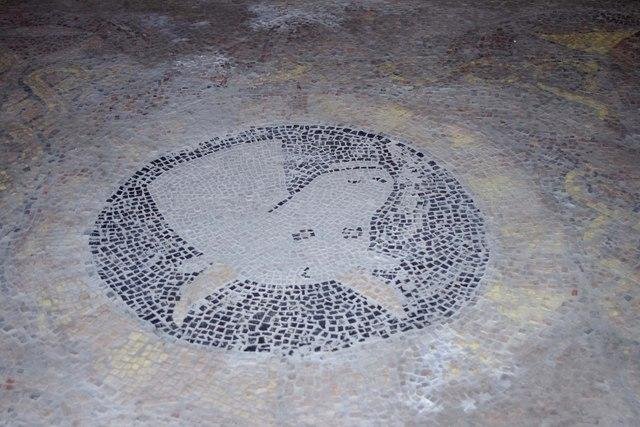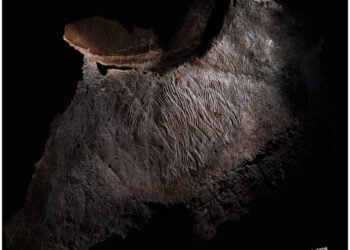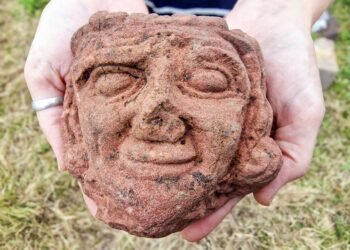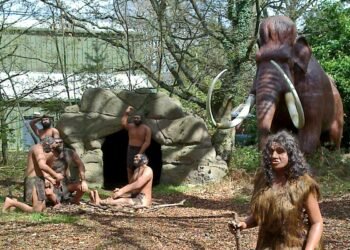Archaeologists have unearthed a well-preserved mosaic, dating back nearly 2,000 years, at Wroxeter Roman City in Shropshire, England.

This ancient site, originally known as Viroconium Cornoviorum during Roman times, was once the fourth-largest settlement in Roman Britain, rivaling the size of Italy’s Pompeii. The city, established in the 1st century CE, was strategically located to protect the River Severn valley and served as a crucial frontier post during the Roman campaigns led by General Publius Ostorius Scapula.
The mosaic, which vividly depicts dolphins and fish in striking white, red, blue, and yellow colors, was found during recent excavations led by English Heritage, in collaboration with the University of Birmingham, Vianova Archaeology & Heritage Services, and Albion Archaeology. The discovery was made in a high-status townhouse along Wroxeter’s main road, where archaeologists also uncovered a large civic building and a shrine or mausoleum.
Win Scutt, senior properties curator at English Heritage stated, “Our excavations were in hope of discovering the walls of this building, but we never suspected we would find a beautiful and intact mosaic, which had lain hidden for thousands of years. It’s always an astonishing moment when you uncover a fragment of beauty hiding just below the ground.”
The mosaic, which likely dates back to the early 2nd century CE, was probably commissioned by a wealthy and influential individual. Roger White, an archaeologist at the University of Birmingham noted that “the survival of a multi-colored mosaic and substantial frescoed walls built in the first few decades of the city’s existence is extraordinary. This is breathtakingly emphasized by the mosaic’s remarkable condition, which is in line with the taste of the time.”
The discovery of this mosaic is particularly significant because it marks the first time such a find has been made at Wroxeter since 1859. The mosaic’s intricate design and the fact that it features six colors—an indication that stones were imported from outside the local area—suggest that the person who commissioned it was well-versed in contemporary fashion and trends. White further remarked, “It is extremely rare to find both a mosaic and its associated wall plaster, and nothing like it has ever been found at Wroxeter before.”
The excavation also uncovered other important artifacts, including coins and pottery, which will help archaeologists date the various phases of the city and understand the activities that took place there.
The well-preserved state of the mosaic is attributed to the fact that the room in which it was found was filled with building debris in the 3rd or 4th century, effectively sealing it off from damage. This fortunate circumstance allowed archaeologists to uncover the mosaic without disturbing other historical layers of the site.
While much of Wroxeter remains unexcavated, the findings from this excavation have added to the understanding of the city’s history, which once included a civic bathhouse, market place, county hall, and judicial center, as well as over 200 houses. The excavation area has now been reburied for protection and preservation.
Scutt concluded by emphasizing the unique preservation of Wroxeter, stating, “Its position in the countryside has shielded it from modern development, meaning that you’ve got a terrific level of preservation in the middle of a Roman city which you don’t find anywhere else in the country. So Wroxeter was special even before the mosaic was found.”

























What can the depiction of dolphins and fish in the mosaic reveal about the cultural or symbolic significance of these animals in the context of the site?